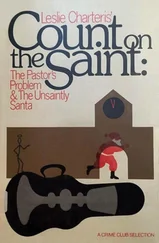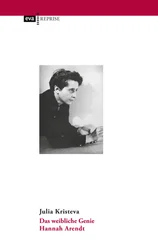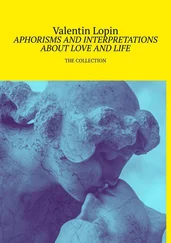Imperceptibly, however, the content of this mystical union also mutated, in such a way that its protagonists (for me, here, Teresa) appear to us as the inventors of brand-new psychic spaces. Mysticism is the crucible of subjective diversities produced by the history of Christianity. With hindsight, several types of “interior castles” can be glimpsed, among which Teresa’s construction stands out for its extravagant originality: an unprecedented combination of total exile from self in the love match with the Other, acute lucidity, rhetorical exuberance, and staggering levels of social activity. This was before seventeenth-century medicine and investigative reason had neutered those firebrand negativists, those insurgents of the concept, those oxymoronic maniacs, the mystics, in order to install the empire of the cogito. Before eighteenth-century libertinism had cynically desecrated the innocent erotomania of nuns. Before today’s calculating mentality had stopped it up and shrunk it down, in benefit of the new maladies of the soul and the antipsychotics industry.

Turned into a laughingstock, jeered at on church squares during medieval carnivals, mysticism retreated for good as soon as Renaissance and Enlightenment eroticism prised the sexual body away from its secret enclave in the shadow of cathedrals and let it loose to gambol in drawing rooms and boudoirs, in paintings, music, and books. The libertine consciousness definitively silenced the mystics who had opened the gates of desire. By dint of overrefining physical delights alongside those of words, colors, and sounds, the incipient sexual liberation whose apogee was reached in the French eighteenth century was impatient to cut free from the polychromatic journeys Otherward of the soul, and soon began to shut the numberless doors of the interior castle.
Nowadays we might read the mystics much as we sniff the opium waft of moldy parchments, for they are merely the vestiges of a vanished humanity, fit to inspire some atavistic poet or a man like Heidegger, 59that deconstructor of metaphysics who saw himself reflected in Meister Eckhart: “Pure Being and pure Nothing are therefore the same.” But in that case, why is it mysticism that attracts me, that attracts us, when we attempt to break free of instrumental rationality, or to loosen the vise of fundamentalist manipulation and analyze the insane logic of the terrorist’s ecstatic drive?
As he was finishing the Critique of Pure Reason , Kant hoped for, and glimpsed in a flash, the possibility of a world in compliance with moral law. 60But the proclaimed universality of the rights of man has still not given our global village an exemplary code of ethics, and the rolling news of the postmodern age brings home the persistence of barbarity more cruelly than ever. Perhaps this is because the Kantian promise was not to be imagined as the fruit of some inconceivable “intelligible intuition”; it could only be that of the “world of sense” linked to “practical reason,” and more precisely, of the “ corpus mysticum of rational beings in it.” By corpus mysticum Kant understood a universal “systematic unity” (that “unity-union” again!) informing “the liber arbitrum of the individual…under and by virtue of moral laws”; a systematic unity “both with itself, and with the freedom of all others.” “This is the answer to the first of the two questions of pure reason which relate to its practical interest — Do that which will render thee worthy of happiness .”
There is nothing to connect Kant with Teresa of Avila. And yet, notwithstanding the gulf between their times, cultures, vocabularies, and projects, this corpus mysticum appearing in the last pages of the Critique of Pure Reason doesn’t strike me as foreign to the saint’s experience, or even to my submarine nights. Where does this resonance come from?
If Kant’s ultimate aspiration to “reunite” morality and freedom speaks so strongly to me, it’s because the final metaphor of unity — the union with the self and with all others , the All-Other — cannot be understood merely in the present trite and bankrupt sense of solidarity, or even fraternity. Such a diminishment not only clips the wings of the adventure; too many heads have also rolled along the way. If freedom is synonymous with desire, how can I enter into union with the centrifugal, centripetal forces of my own desires, let alone with those of others? This question is still searching for an answer. “Seek yourself in Me,” said the Other to Teresa, and they never ceased answering each other. How? On the analyst’s couch? At a meeting of the UN Security Council? At a rock concert? At the Beijing Olympics? At a Gay Pride march? By playing Mozart operas at Ground Zero, in Tel Aviv, in Baghdad? Contrary to all rational expectation, Kant invites us to update an ancient European experience, the theology of the corpus mysticum . Is this possible? What if it were?
It would seem that at the dawn of the third millennium we are still waiting for this new “ corpus mysticum of rational beings” to show up. But perhaps the old corpus mysticum of inordinate and excessive beings, alumbrados , lovers of the Absolute and of nothing, has not said its final word…Perhaps Teresa keeps some surprises up her sleeve.
Chapter 3. DREAMING, MUSIC, OCEAN
Mysticism is the obscure self-perception of the realm outside the ego, of the id.
Sigmund Freud, Findings, Ideas, Problems
At the start of the twenty-first century, under the drones of the new crusades brought to us by globalized satellite TV, that Old Continent of godly lunatics whose memory Teresa is reawakening for me, far from disappearing into abstruse mists, appears strangely contemporary. The commodification of the sacred by various sects, alongside that of hard-core porn DVDs by an industry that does not blush to seek spiritual endorsement from the Moonies, Scientology, or Soka Gakkai, fail to discredit, for me, the regressus animae in search of true interiority. The language I inhabit like a curious foreigner bids to seep into the folds of the disparate writings known as “mystical” texts. My first move is to unify their polysemy under the generic term mysticism , ignoring the plural of its outlandish singularities for the time being. A common logic subtends those bodies in their exultant “meditations,” those “poems” and “narratives” unintelligible to today’s profane culture-mart and beyond the scope of religious competition. Later I will discern the suns and skies, the hills and gullies, the rivers and deserts, the plants and animals of this promised land of sacred lunacies: Teresa will guide me to them. For now, I survey the terrain from afar: another time, another space. My viewpoint is not that of a bird or the stars but chiefly that of psychoanalysis.

“The mystics, eh? You know the score, don’t you. A bunch of narcissists who get off on manque à être , on lack of being itself!” The speaker is a colleague who might be my alter ego on a guided tour of Mystic Country. He’s far more solid, intellectually speaking, than Bruno. I haven’t seen Bruno since he came back from Aceh. He sends me kisses by e-mail and over the phone but devotes most of his time to the NGO that helps tsunami-hit fishermen to build new boats, neglecting his editorial duties at Zone. Jérôme Tristan, on the other hand, has just published a piece in a journal specializing in the contemporary vicissitudes of mystical thought. I’m impressed!
Читать дальше













